Labels for Safety, Visuals and Facility ID Desktop Printers
Labels for Product, Wire and Lab ID Benchtop Printers
Labels for Safety, Visuals and Facility ID Desktop Printers
Labels for Product, Wire and Lab ID Benchtop Printers
Safety and Facility ID Desktop Printers
Product, Wire and Lab ID Benchtop Printers
Barcode Scanner and Printer Kits
Barcode Scanner and Printer Kits
PaintStripe Floor Marking Stencils
Valve Lockouts & Hose Lockouts
Group Lock Boxes & Permit Control
Brady Safety Lockout Tagout Services
Pipe Marker Accessories & Mounting Brackets
Maintenance and Production Tags
Calculators and Assessment Tools
Product Finders and Data Sheets
Why Minor Servicing is sometimes the smartest option
During day-to-day operations in the workplace, a smooth production flow is ideal. But, there are bound to be tasks that temporarily stop your production like clearing a jam, cleaning off a cutter or oiling a part. Minor interruptions in the process, but interruptions nonetheless.
When these situations occur, in order to keep employees safe, the first reaction may be to follow your lockout tagout procedure. Unfortunately that can add a lot of downtime to your processes and requires the time of additional employees, all of which slows down your efficiency and costs you money. But, there may be another method that keeps your processes running smoothly and keeps your employees safe.
The method to fix it, when done correctly, consistently and safely, is called minor servicing.
The term minor servicing refers to a maintenance or servicing situation that DOES NOT need a full lockout tagout procedure. It’s an exception to lockout tagout, and therefore needs to be handled differently.
Let’s take a closer look at the Occupational Safety and Health Administration’s (OSHA’s) 1910.147 Control of Hazardous Energy (lockout/tagout) standard as it applies to stopped production. OSHA’s 1910.147(a)(1)(i)[1] process requires you to isolate all energy and prevent accidental startup. So, your equipment needs to be de-energized to prevent an accidental startup that could cause an injury or damage the equipment or product.
But, a full machine isolation may not be needed if the task is considered a minor servicing task. In 1910.147(a)(2)(ii)(B)[2], there is an exception to OSHA’s lockout tagout standard. Frequent and repetitive machine tasks like clearing a jam or a minor tool change may need alternative measures to protect employees, which may not require power sources be completely cut off as in lockout tagout.
The American National Standards Institute (ANSI), on the other hand, makes it clear that lockout tagout should be used unless the user can demonstrate that a well-established alternative method will provide effective protection. In situations where the task is not well understood or risk-assessed, lockout should be the default protective measure to control machinery or processes.
Section 8.2.1 of ANSI/ASSE Z244.1-2016[3] specifies that alternative methods should be used only after hazards have been assessed and documented through the application of a practicability (or justification) study to determine if the techniques used will result in a negligible risk or no risk for sudden accidental startup.
Since this unique set of procedures is not mandatory from OSHA, and is an ANSI best practice, the term may vary by organization. Other terms for similar procedures include:
In order to even think about minor servicing, you first need to establish a lockout tagout program.
This means you’ll need to have lockout tagout procedures developed for all equipment that has hazardous energy. These lockout procedures need to include all potential hazardous energy, magnitude, location, isolation points, lockout device needed and verification method to be compliant with OSHA 1910.147[4]. Common sources include:
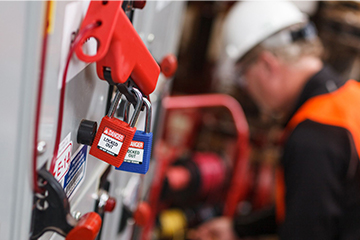
OSHA’s standard 1910.147(b) includes a list of devices, but doesn’t limit energy isolation to just these[5]. Consider it a short list upon which you can build your workplace safety:
Minor servicing is seen as a different type of occurrence than a lockout tagout procedure in that it applies to:
1. An activity that happens during normal production operations.
2. An activity that is:
If a given task has the above characteristics, you may be able to use the minor servicing exception to reduce downtime.
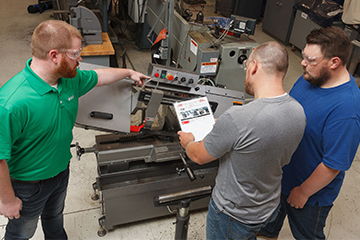
To determine if you need minor servicing procedures, ask yourself this question: Is the task one that requires a halt in production as part of everyday operations or maintenance servicing? If you answer NO, this means you need a full lockout. If you answer YES, and the task is considered routine, repetitive and part of normal operations – the minor servicing exception may be a viable option, pending a justification via a Job Safety Analysis (JSA) and documented procedures.
Also, consider who is doing the work. If the servicing requires a maintenance person (an authorized person), it will typically require full lockout tagout. Minor servicing, on the other hand, is usually performed by the equipment operators.
For more detailed information on how to build a successful lockout tagout program, refer to these additional resources.
Before you start writing procedures, you’ll need to assess the task’s overall risk. This is a critical step that helps you examine the task by breaking it down step by step:
Once the task is thoroughly examined and risk is assessed, you can then move on and create procedures to reduce risk, called control measures. The National Institute for Occupational Safety and Health[6] ranks the ways you should reduce hazards in the Hierarchy of Controls. At the top of this list you’ll find the most effective controls; at the bottom you’ll find the least effective controls:
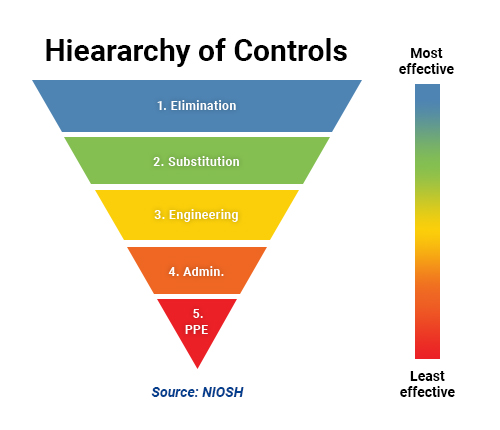
Whatever control measures you need, procedures need to be in place so the routine task is performed safely. As an employer, it is your responsibility to document the hazards involved with each routine task. And, you also need to make sure employees are aware of these hazards when they perform the task.
As you develop your minor servicing procedures, you’ll need to assess and justify additional control measures. This is critical for removing your workers from hazards. In order to clear a jam or service machinery, additional machine guards and / or safety mechanisms may be needed.
All machines must meet OSHA’s 1910.212 Machine Guarding standard[7]. Guards and safeguarding devices have a big impact on reducing the probability of harm. Minor servicing procedures for equipment that require access to machine hazard zones like ingoing nip points, rotating parts, flying chips / material and sparks may need to have machine guarding or safety mechanisms installed. Examples can include:
Your employees are at the core of your work. That’s why training is a critical part of the process. For minor servicing, it’s key to teach workers minor servicing tasks when they learn how to operate machinery. This provides an awareness of how to adjust equipment and use safeguarding devices, which can reduce risk of injuries and lost work time.
After you’ve done the work to set up your minor servicing procedures, don’t lose ground. Keep it going. Address changes and update procedures as they occur. When you periodically inspect lockout tagout procedures, as a best practice you should also include a review of your minor servicing procedures.
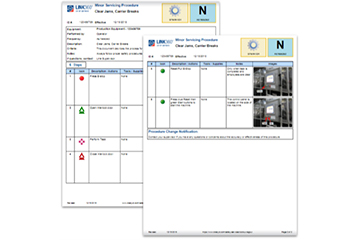
Once minor servicing procedures are written, have the procedures readily available so employees can easily reference the material. Install them on equipment, at workstations and in training materials. This way, you’ll also be ready for periodic inspections.
For new changeover processes or newly-identified tasks, develop additional procedures. Then, use them in pre-job briefing and toolbox talks so that the procedures are used and remain accurate. Coordination between the operators, engineers, safety teams and management is essential for keeping processes up-to-date and workers safe.
Minor servicing procedures, like lockout tagout procedures, can be also be created, stored and sustained in a software program, such as Brady LINK360®.
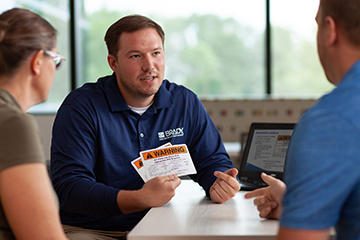
Need assistance in creating alternative method procedures?
Brady offers a Minor Servicing option that can document your processes and the way you use safety mechanisms. In this service one of our expert field engineers will come to your facility and write your alternative method procedures using our LINK360 software. All of this happens while your employees go about their work, so you can keep your production running smoothly.
So if you find yourself consistently going to your lockout tagout procedure when you need to clear jams or oil a component, consider minor servicing as an option. You could be saving yourself precious time while keeping your employees safe.
Complete our short form and one of our representatives will contact you.